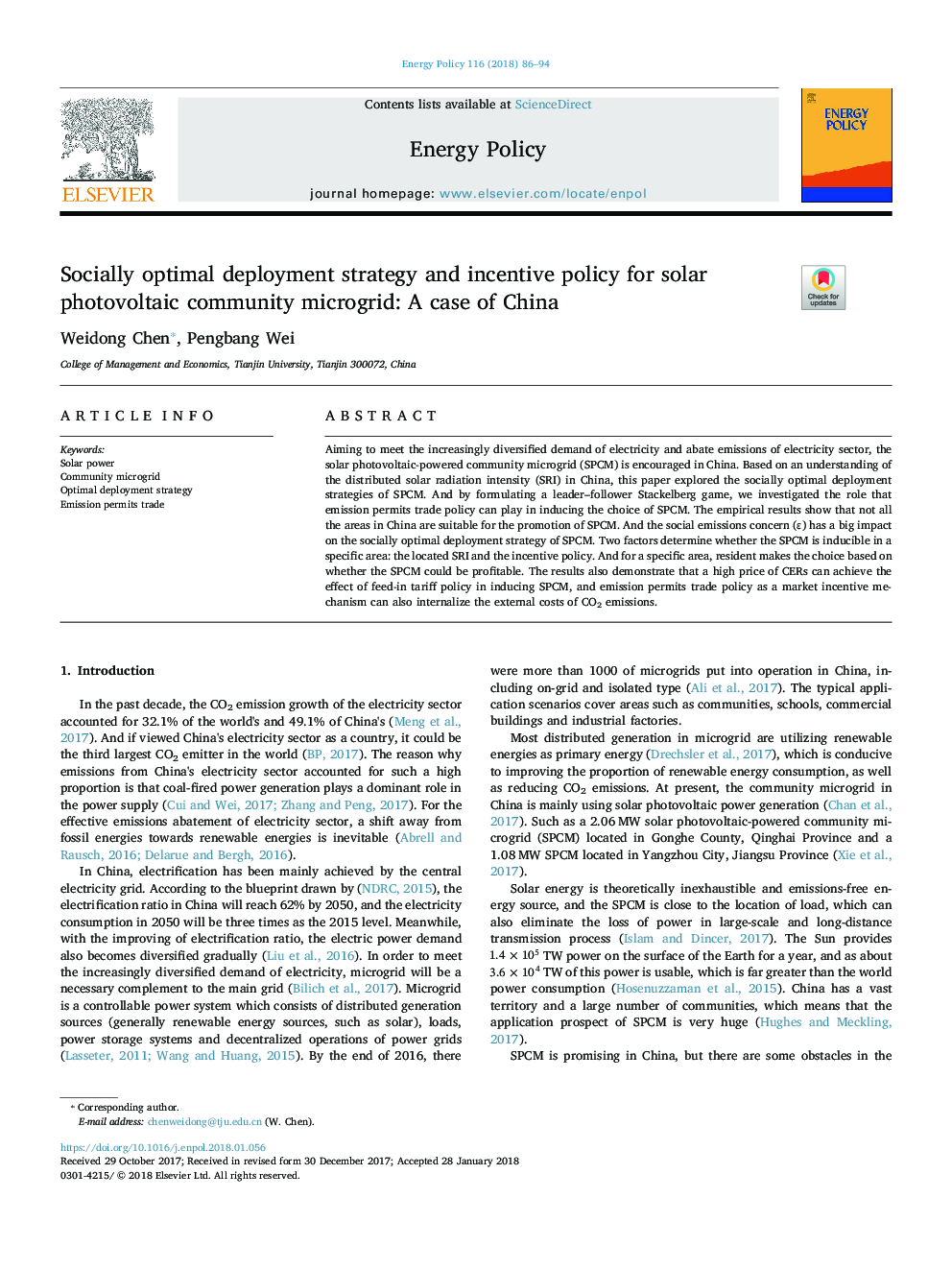| Article ID | Journal | Published Year | Pages | File Type |
|---|---|---|---|---|
| 7397326 | Energy Policy | 2018 | 9 Pages |
Abstract
Aiming to meet the increasingly diversified demand of electricity and abate emissions of electricity sector, the solar photovoltaic-powered community microgrid (SPCM) is encouraged in China. Based on an understanding of the distributed solar radiation intensity (SRI) in China, this paper explored the socially optimal deployment strategies of SPCM. And by formulating a leader-follower Stackelberg game, we investigated the role that emission permits trade policy can play in inducing the choice of SPCM. The empirical results show that not all the areas in China are suitable for the promotion of SPCM. And the social emissions concern (ε) has a big impact on the socially optimal deployment strategy of SPCM. Two factors determine whether the SPCM is inducible in a specific area: the located SRI and the incentive policy. And for a specific area, resident makes the choice based on whether the SPCM could be profitable. The results also demonstrate that a high price of CERs can achieve the effect of feed-in tariff policy in inducing SPCM, and emission permits trade policy as a market incentive mechanism can also internalize the external costs of CO2 emissions.
Keywords
Related Topics
Physical Sciences and Engineering
Energy
Energy Engineering and Power Technology
Authors
Weidong Chen, Pengbang Wei,
